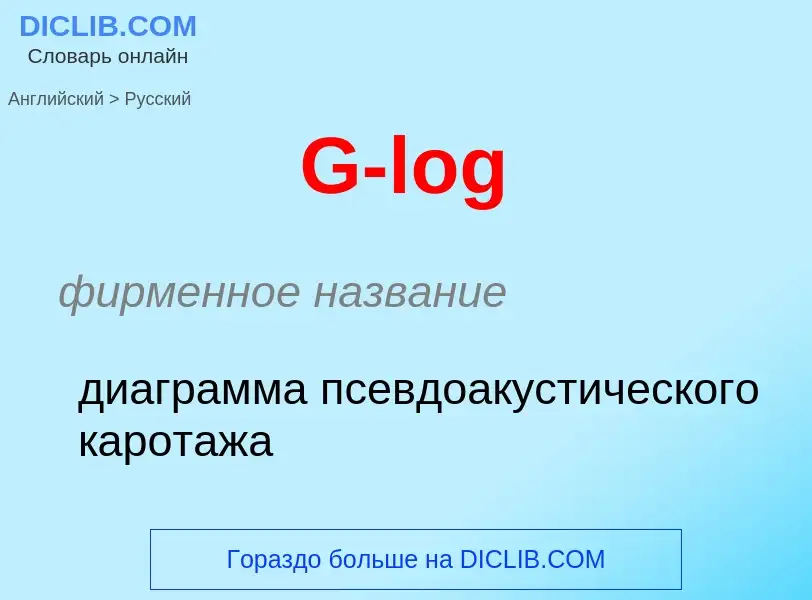Translation and analysis of words by ChatGPT artificial intelligence
On this page you can get a detailed analysis of a word or phrase, produced by the best artificial intelligence technology to date:
- how the word is used
- frequency of use
- it is used more often in oral or written speech
- word translation options
- usage examples (several phrases with translation)
- etymology
G-log - translation to russian
фирменное название
диаграмма псевдоакустического каротажа
математика
график с логарифмическим масштабом на обеих осях
математика
график в логарифмическом масштабе по обеим осям
Definition
Wikipedia

In computer science, the iterated logarithm of , written log* (usually read "log star"), is the number of times the logarithm function must be iteratively applied before the result is less than or equal to . The simplest formal definition is the result of this recurrence relation:
On the positive real numbers, the continuous super-logarithm (inverse tetration) is essentially equivalent:
i.e. the base b iterated logarithm is if n lies within the interval , where denotes tetration. However, on the negative real numbers, log-star is , whereas for positive , so the two functions differ for negative arguments.
The iterated logarithm accepts any positive real number and yields an integer. Graphically, it can be understood as the number of "zig-zags" needed in Figure 1 to reach the interval on the x-axis.
In computer science, lg* is often used to indicate the binary iterated logarithm, which iterates the binary logarithm (with base ) instead of the natural logarithm (with base e).
Mathematically, the iterated logarithm is well-defined for any base greater than , not only for base and base e.


